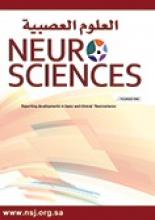Abstract
The necessity of a therapy allowing aphasics to be rehabilitated quickly in social life urged us to adapt a therapeutic strategy developed in the USA and implemented in France under ‘therapie melodique et rythmee’. This model of language therapy has been destined to aphasics with good auditory comprehension and emotional stability despite severe language impairment. A careful evaluation of the patient is necessary to select the candidates for exposure to this therapy. Our evaluation is based on an examination battery (made of repetition, naming, auditory comprehension), items inspired by the Boston Diagnostic Aphasia Examination and adapted to Tunisian context. This method relies on the prosodic features of Tunisian Arabic (melody patterns, rhythm, pitch, stress ....) and proceeds from non verbal exercises. The latter are realised by a corpus of texts of various length and structure. Applying Arabic melodic and rhythmic therapy allowed patients to recover the capacity to communicate to different degrees with others.
- Copyright: © Neurosciences
Neurosciences is an Open Access journal and articles published are distributed under the terms of the Creative Commons Attribution-NonCommercial License (CC BY-NC). Readers may copy, distribute, and display the work for non-commercial purposes with the proper citation of the original work.






